As we continue to commemorate the centenary of the Russian revolution, which overthrew the Tsar and led to the martyrdom of millions, including the members of the royal family themselves the following year, we here take a look back at what kind of attitude the Russian people had towards the Tsar and his family in the period leading up to their glorification by the Moscow Patriarchate in 2000.
The time has come to glorify the Tsar-Martyr Nicholas and his august family. They are not yet glorified by our Church,1 but the attitude towards this in the Church and in society is completely different than what it was a few years ago. It’s a sign that despite the seeming hopelessness of the current situation, some part of the people has woken up. There are many churches, as stated in the report of the Commission for Canonization, where they are already praying before icons of the Royal Martyrs. It is a miracle which we are witnessing today: the natural demand of the Russian Orthodox people for the canonization of the Tsar-Martyr, which aligns with the will of God. The Russian people are united around the Tsar in this.
“Do you miss your tsar-batushka?” our enemies ask us, mockingly, as if it hadn’t been the best of times for Russia.
Here are some conversations I heard during a procession in honor of the Tsar-Martyr:
“The significance of the canonization is huge; no words can express it,” one young man said.
“The most important thing revealed here,” another noted, “is that we are Russians, and this is our tsar. There’s both repentance and the acquiring of joy at the same time here.”
“I prayed a lot for the Tsar to be canonized,” a third added. “Then I’ll be able to perceive myself as Russian in my country. It’ll be easier for me that not abroad, but here we have acknowledged the Tsar as a saint. In this I will affirm that I live in Russia, not in some colony.”
The theme of canonization is truly, above all, the theme of awakening, reflecting on how the people’s memory was stifled, how it was held in a hypnotic state, suggesting that there was nothing, and no tsar. The most forbidden subject was the Tsar.
It was a taboo, forbidden subject. But, as they say, God sees the truth, but won’t soon tell it—and God has revealed this truth. And the more people have contact with the Tsar, the more they see his portraits, the more they read books about him, like the studies of Sokolov or General Diterikhs, the more this taboo weakens. That this truth has been opened is a good sign for Russia: It had the Tsar, and it has him now, as a Heavenly intercessor. It is a mystical act of repentance: He who was killed, who they tried to make a mockery of and hide all the truth about, is now declared a saint.
Our Tsar is a holy symbol of Russia. Every people has its historical calling and its own characteristics. There is occurring more and more now a depersonalization of peoples precisely because in every people, as in every person, only that which belongs to Christ is truly and uniquely unrepeatable: The Russian tsar differed from European monarchs, and the Russian people corresponded to this form of government. The Russian people are simplehearted, and they needed a wise and simplehearted tsar. All of this was united in the last tsar.
This is why the souls of so many people sprung up and rushed towards this mystery. Here is the testimony of a priest about his vision of the Tsarina on the eve of the fiftieth anniversary of the revolution: “Until the Tsar is glorified, there will be a curse over Russia,” is consonant with dozens of other letters that I constantly receive. And the reflections of the young believers during the Royal procession, which I quoted above, are not superficial patriotism, but a manifestation of a deep Orthodox consciousness.
If they had not dethroned and killed the tsar, they would not have been able to kill priests, and all the Orthodox people. He was the First Martyr in a Church of New Martyrs, although not strictly chronologically so.
But the enemies stealthily approached the Tsar and the Church. When they said we don’t need our Orthodox tsar, they wanted to deprive the people even of the instinct of self-preservation. They slandered the Tsar, so the Russians would stop being Russians, and we should understand this today at least on the level of the instinct of self-preservation.
***
Glorifying a saint always requires two conditions: First—the veneration of the faithful, and second—posthumous miracles.
When I began to read testimonies from Radio Radonezh five years ago about miracles of the Royal Martyrs, I could not have guessed that these programs would cause such a reaction. Since then, four collections of miracles of the Royal Martyrs have been published, and a fifth is being prepared, and the stream of testimonies isn’t drying up.
And finally, there is the miracle with an icon, exuding a fragrant myrrh, which began on November 7, 1998 and hasn’t stopped yet.2 There were 5,000 witnesses to this fragrant myrrh streaming at the procession in Moscow on the birthday of the Tsar-Martyr, May 19, 1999. The icon is taken from church to church, filling entire churches with its sweet fragrance. Every testimony to the miracles of the Royal Martyrs has the fragrance of love, but here it is given to be felt by all, by a visible image, that all would see and feel this anointing of holiness upon the Royal Passion-bearers, and that all would perhaps understand that the royal anointing of Christ remains on our sovereign, despite his being removed from the throne. As the main stumbling block for many in the question of the canonization of the Tsar-Martyr remains his forced abdication, we receive in response the witness of Heaven.
These miracles will put many to shame. What can we say after that? Should we proclaim thousands of people crazy?! For all those who resist, it is the savour of death unto death, as the apostle Paul says, but for us, the savour of life unto life (2 Cor. 2:16). The Tsar-Martyr’s involvement in the fulness of the mystery of the Cross and Resurrection is that savor of which our Church and our Russia are most in need of today.
Among the multitude of miraculous signs by which the Lord has now glorified Tsar Nicholas II, we must especially highlight two great and truly prophetic miracles. They are a miracle of a Christian family, a “little Church,” on the eve of the destruction of millions of families, and a miracle of the lawful authorities on the eve of the power of “the man of lawlessness,” the antichrist.
The tsar’s governmental service corresponded to the glorious Heavenly anointing which he received from God: A ruler should love his people (the love of the Tsar, especially for simple people, as if without distinguishing between the rich and the poor, cannot but amaze), and please God in all things. None of those claiming authority now have such an understanding. During his reign, Nicholas II amazed people with the piety, humility, and simplicity which distinguished him from all other rulers. The ultimate self-sacrifice in the line of duty before Russia is expressed in the Tsar’s famous words, “If a sacrifice is needed for the salvation of Russia, I will be that sacrifice.”
The family of the Tsar is called an icon of the Orthodox family. This family impresses with the attention and love of the five children for one another—they were all connected, with their father, with their mother; they were one love, one soul. And this was not just a family withdrawn into their family happiness: They lived the whole life of Russian society, directly taking part in every need of their subjects. They were truly a royal family.
The murder of the Tsar had many long-term targets, including the destruction of the family. Trotsky wrote in the 30s, “Russia has again become bourgeois; there is again the cult of the family.” They wanted to destroy the family. The family is a tiny Church, and the destruction of the entire Church thereby takes shape.
Everything rests on the family—both morality and the state. The murder of the Royal Family was followed in society by the slogans, “Down with marriage!” “Down with shame!”—as if bursting forth and clearly manifesting the spiritual essence of this murder. The power of the state will persist for decades, but cannot but collapse in the end.
It is symbolic that they killed not just the Tsar and his family, but also all his faithful servants. The Royal Martyrs and their servants are a symbol of Russia. It was like an extermination of all of Russia, of all who were loyal to the Tsar. Then they tried to kill those whom they knew, that they wouldn’t be remembered. We should not be surprised that after the destruction of the Orthodox monarchy there followed the rapid destruction of the characteristics of the uniqueness of the Russian people, first in the depersonalizing communist collective, and now, to a more terrible degree, the depersonalization turning the people into beasts through the legalization of the most corrupt sins as the norm.
What is happening in Russia today—the disintegration of the family, morality, and state—is a direct result of the unconscious and unrepented crime of 1918. Now, when the destruction of the family is reaching its limits, the canonization of the Tsar will be a gathering of the Russian people in one family, and the return of the prodigal son to his father.
As the remarkable theologian of our times Archimandrite Constantine (Zaitsev) wrote a few decades ago: “Now, perhaps, the most obvious signs of the splitting of Russian society into two spiritually opposed camps is how they treat the Royal Family.” And today, we would add, it is connected with the fate of Russia like never before, for the sake of which the Tsar offered himself as a sacrifice.
Someone may lament: “It’s too late to talk now about canonization,” but everything is possible for God. As the Tatar-Mongol yoke, as the Polish-Swedish invasion—when it seemed it was all over for Russia—suddenly dispersed, so today’s yoke of the “golden calf” and the invasion of lies into Russia will be scattered only by the strength of God. The canonization of the Tsar will be a historical miracle: Until recently, it was impossible to even imagine the possibility amid the universal betrayal and oblivion. At the end of the twentieth century, when the war with evil is entering a new period, we are given this invisible spiritual support from God.
Why would the canonization of the Tsar give spiritual strength to the faithful? Why would it be a miracle of miracles? Because it would mean that all the lies of the twentieth century have ceased and peeled off like rot, and the truth was revealed. The glorification of the tsar will be a victory over the dark powers of the antichrist which defeated Russia in 1917—maybe for a small portion of the people, but a victory. The canonization will drive out the demons from Russia and from the Church.
Our Tsar is an orientation and guide for the blind—he whom Russia should trust, and has trusted.
With the execution of the Tsar, grace as if withdrew from Russia. Everything went bad for Russia, and became confused. So monstrous was the crime, that our people were as if deprived of their childhood—pure, pristine, and beautiful.
As a child with open eyes and a pure heart, upon whom the evil that surrounds him presses consciously or subconsciously, cannot live a natural, carefree life, so the naturalness of our people left. It was a sin against nature.
“My grandma told me about it when I was seven,” one parishioner of our church said, sharing her impressions with me. “Grandma’s face changed when she spoke about the shooting of the Tsar, Tsarina, the children, and the servants, although she herself was a revolutionary. I felt the horror.”
This horror has passed from generation to generation. That’s why people went to the gulags from generation to generation with such slavish obedience. That’s why the people would say “Tsar-Nikolashka”3 about him who was slain, and would laugh with an unnatural laugh—they thus hid their fear. And now they have come to an even greater horror. It was an unnatural and illegal crime, and the fact that the Tsar-Martyr has returned to our memory (and why return? Why not be forgotten?) witnesses that this memory, and everything connected with it, was latently alive in people’s hearts and conscience. We spoke above about the loss of the personality of the Russian people and the Russian person. In conclusion, we will say a few words about the personality of the holy Tsar-Martyr. As it says in the Paterikon:
“Why aren’t you asking me anything?” the abba asked his disciple. “For me, it is enough to watch you,” he answered.
In the person of the Tsar we see the grace of Divine peace. We can be soothed, looking at his photograph. Even in exile, his peace did not change (look at the photos where he is sitting on logs or shoveling snow). Our people can, after our turmoil, return to peace. A man with a sensitive soul cannot but understand.
The face of the Tsar speaks for itself. It is comely and lucid. It is filled with the highest nobility. The Tsar preserved a childlikeness and purity. The Tsar retained timidity; he felt uncomfortable being vested with power over people. It was a Divine mark, which he preserved to the end.
No matter how someone looks at the Tsar, it’s impossible to deny that his face is always full of genuine importance. The wonderful nature of the Royal Family is captured in photographs. They were not acting. There is no guile in their faces, their direct gaze, because these faces are partly iconographic in and of themselves. The icon of the Tsar in the Church Abroad is basically just a photograph with a halo, and several photographs of the Royal Martyrs are perceived as icons. It’s no coincidence that they hang together with the icons in many Orthodox homes.
Compare a portrait of the Tsar with any other statesman—not just our Chernenko, Chernomyrdin, and Chubais, but all famous Western leaders, like Churchill, Roosevelt, or de Gaulle. There is the mark from on high in the Tsar's face.
Show the face of the Tsar to a child, and it will favorably act upon his soul. With the canonization of the Tsar, a pure perception will return to the people. Children sense with their hearts—you can’t deceive them. No matter what happens, the childlike soul of the Russian people yet lives. Childlikeness exists in icons, and the face of the Tsar has this in common with the face of Christ—a face that trusts God and the people.
January 24, 2000

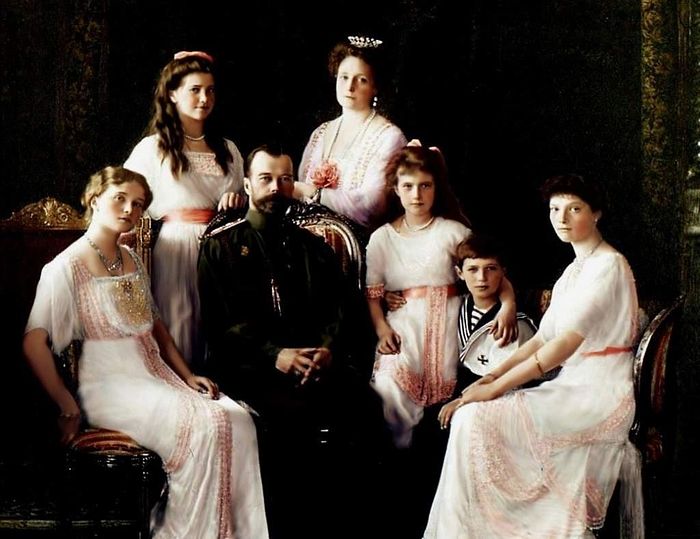
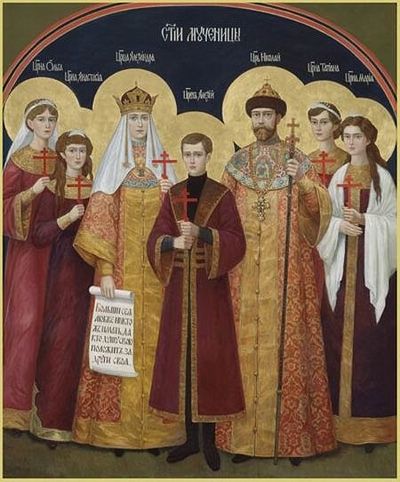
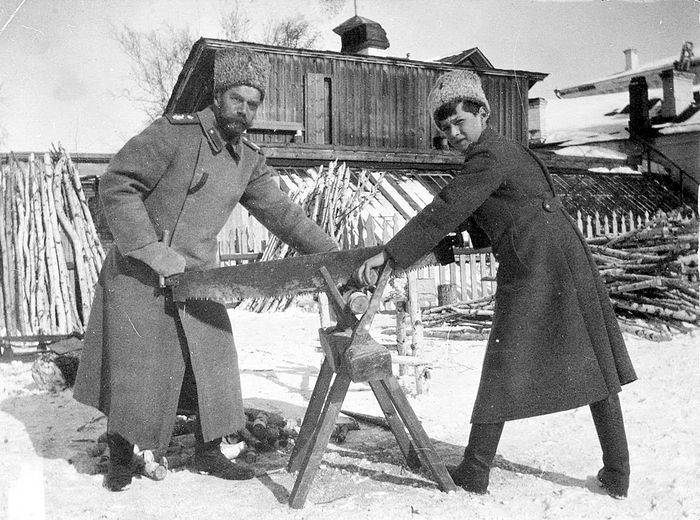
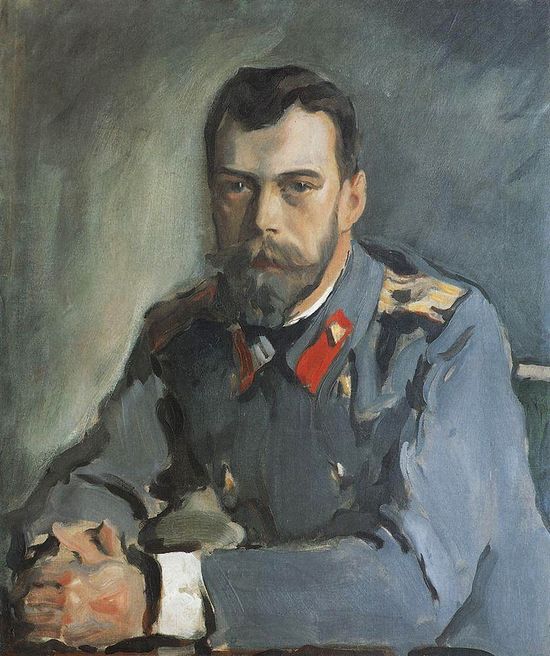
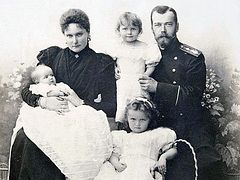
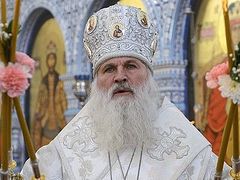
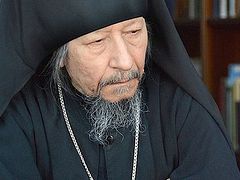
"St. Tsar Nicholas, martyr pray for me and all those facing persecution in this world."